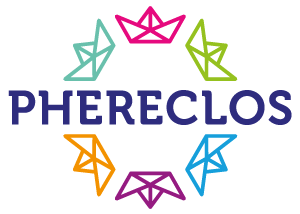It's my life
- Austria,Carinthia
- 2007

| Time frame | |
| Categories | |
| Level of Schools | |
| External Partners | |
| Type of Schools | |
| URL | |
| Number of Schools involved | |
| Number of Schoolheads involved | |
| Number of Teachers involved | |
| Number of Students involved | |
| Number of Parents involved | |
| Number of External Partners involved |
“It's my life” was a school project to strengthen the mental health of young people at vocational schools in Carinthia.
A total of six schools, each with two classes, took part in the project. After the presentation of the project in the participating classes, the students selected their topic from four subject areas. The topics were recognizing and coping with conflicts, consumer behaviour with a focus on alcohol, self-assurance and stress. Over a period of several weeks, the students worked on their topic together with an external coach and a teacher.
Aims for all target groups:
Support and encouragement of the program
Promoting and strengthening the mental health of the adolescents Promotion and strengthening the emotional well-being of the adolescents Promotion and empowerment of the adolescents: self-competence
Pairs of external coaches and teachers worked with students. There were information sessions for parents, school leaders and other teachers at the BFS.
Pupils could choose the topics they worked on:
• Promotion of self-assurance
• Promotion of non-drinking and non-smoking
• Avoidance of stress and coping with stress
• Recognizing and coping with conflict
The feedback to the intervention was positive.
According to the overall intervention goal “quality of life”: A significant decrease in the areas of “emotional problems“, “behavioral problems“, “hyperactivity“ and “behavioral problems with peers“ was found.
According to the other overall intervention goals: No significant effects could be found but a positive trend for some goals.
In the intervention group with focus on “Recognizing and coping with conflict”: A significant reduction in
“bullying“ and an increase in skills “coping with conflicts” appeared.
In the intervention group with focus on “Promotion of non-drinking and non-smoking”: A significant reduction in alcohol consumption and a decrease in talking about alcohol intoxication in the class was found.
Health promotion for young people is closely connected with their social environment. Besides the family, a central social environment in which preventive measure can be implemented are schools: They can offer learning opportunities supporting the development of lifestyle habits that maintain and promote health.
Therefore, health promotion in school is an important issue and has grown rapidly, especially in compulsory school age (age from 6 to 15).
The Austrian Federal Ministry for Education, Arts and Culture and the Federal Ministry of Health have pursued a health promotion strategy at Austrian schools for several years. Most health promotion activities are conducted in academic secondary schools and full time vocational schools/ colleges, but dual VET programmes (apprenticeship and part time vocational schools from age 15 to 19; with the duration of two or four years) are ignored in most cases. One main reason for this might be that the Federal Chamber of Economy Austria - that represents business enterprises - has a critical attitude toward health promotion in these schools: The companies pay for the school visit of the apprentices and want them learning job related skills and not discussing health related topics.
Pmkijufa faced this problem and negotiated a compromise: The Federal Chamber of Economy Austria approved the implementation of a health promotion program under the condition that it only took place in a few subjects (e.g. religion or political education).
A relevant part of the students (apprenticeship trainers) had visited a Polytechnicum or a Hauptschule before.
There were workshops using formative evaluation in which the implementation process was reflected.
Cooperation was not easy between the project partners (especially to the schools and the apprenticeship teachers), but they faced the quarrels, found solutions and achieved good outcomes.
Promente kijufa had the lead.
There was a steering committee consisting of promente kijufa, "Leiter des Sozialpädagogischen Teams der Fachberufsschulen in Kärnten", Landesstelle Suchprävention Kärnten, GKK, Landesschulinspektor. The university of Vienna led the formative evaluation.
Steering committee, coordinator of the network at the schools, coordinator at every school
A formative and summative evaluation was conducted (apprenticeship trainers, teachers, parents involved) and there were feedback loops.
